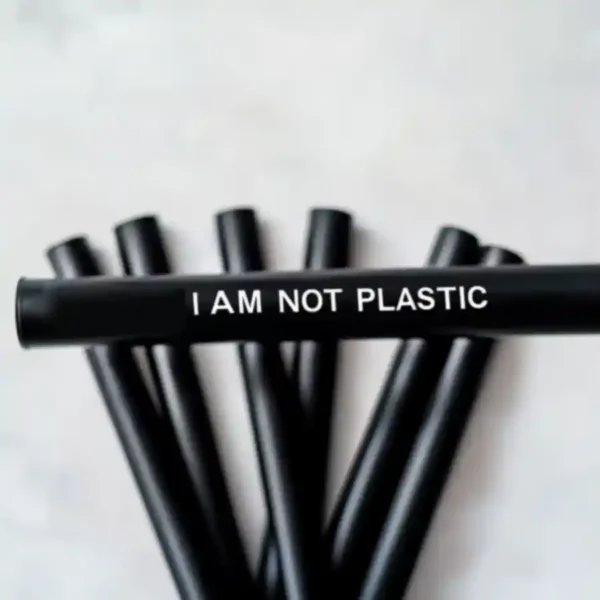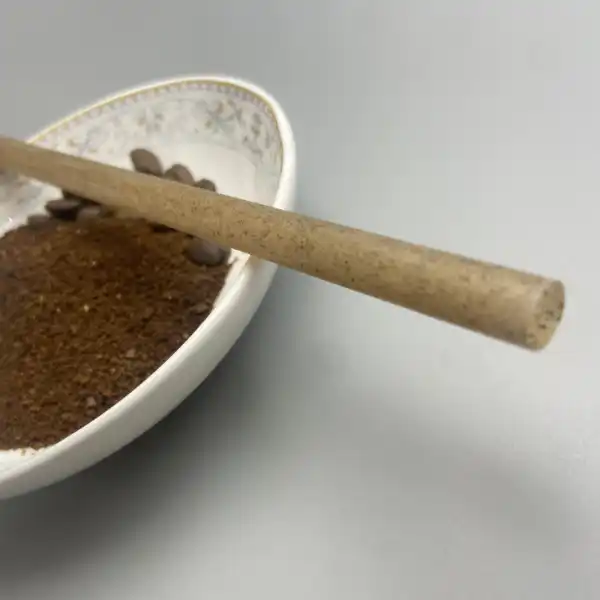I. Introduction
The imperative to reduce our reliance on single-use plastics, particularly items like plastic straws, has become increasingly evident in recent years due to their detrimental impact on the environment. As a result, the demand for sustainable alternatives has grown, with biodegradable straws emerging as a viable option for businesses seeking to minimize their ecological footprint. This guide aims to provide businesses with a practical framework for making informed decisions when selecting biodegradable straws, ensuring that your choices align with both environmental responsibility and business needs.
II. Understanding the Problem: Why Switch to Biodegradable Straws?
Traditional plastic straws present significant environmental challenges. These single-use items contribute substantially to the proliferation of microplastics, which contaminate ecosystems and enter the food chain. Furthermore, they are major contributors to marine pollution, often ending up in oceans where they harm wildlife through ingestion and entanglement. Plastic straws also persist in landfills for hundreds of years, exacerbating waste management issues. It is therefore crucial that businesses acknowledge these impacts and adopt sustainable solutions. For a deeper understanding of the environmental impact of different straw materials, refer to Comparing Biodegradable Straws Materials।

III. What Are Biodegradable Straws Made Of?
Biodegradable straws are manufactured from a variety of renewable, plant-based materials, each with unique properties. Common options include:
- Paper straws: Typically made from FDA-approved paper, often without plastic coatings, these straws are a popular choice, though they can become soggy if used for long periods.
- Bamboo straws: Constructed from rapidly renewable bamboo, these straws are durable and reusable.
- Grass straws: Made from 100% sedge grass, these straws are biodegradable and flexible.
- Rice straws: Composed of rice and tapioca starch, these straws are compostable and can even be consumed after use.
- Wheat straws: Derived from the stems of wheat plants, these straws are gluten-free and allergen-friendly.
- Sugarcane straws: Created from sugarcane fiber, these straws are durable and can withstand extended use without getting soggy. Explore customizable sugarcane straws to match your brand’s aesthetic.
- Coffee straws: Made from coffee grounds, these straws offer a unique aroma and are biodegradable. Check out our customizable coffee grounds straws for a distinctive touch.
- PHA straws: These straws are made from plant-based polyhydroxyalkanoates and are designed to biodegrade in marine environments.

Each material offers a range of benefits. Some are designed to break down quickly, others are intended for durability, and some even offer unique properties such as flavor or aroma.
IV. Key Considerations When Choosing Biodegradable Straws
Selecting the appropriate biodegradable straws for your business involves careful consideration of several factors:
- Biodegradability and Compostability: It is essential to differentiate between biodegradability and compostability. Biodegradable materials will decompose naturally over time, while compostable materials break down into nutrient-rich soil. Furthermore, some straws are specifically engineered to be marine biodegradable, meaning they will break down in ocean environments. Be sure to confirm whether the straws can be composted in home or require industrial composting facilities.
- Durability and Functionality: The selected straws should be able to maintain their structural integrity when used with both hot and cold beverages, resisting becoming soggy or breaking down. Consider the appropriate size and diameter to accommodate various drinks, such as wider straws for boba tea.
- Safety and Health: Biodegradable straws are generally a safer alternative to plastic, as they do not contain the harmful chemicals found in plastic. Ensure that the chosen straws are made from food-grade materials and that they meet FDA standards.
- Cost and Budget: While the initial cost of biodegradable straws may be higher than that of plastic straws, it’s essential to view this as an investment in your brand and the environment. By sourcing in bulk and considering long-term benefits such as reduced waste management costs and enhanced customer loyalty, the financial impact can be mitigated.
For more insights on different types of drinking straws and their eco-friendliness, visit Types of Drinking Straws: Sizes, Uses, and Eco-Friendliness।

V. Practical Steps for Implementation
Implementing biodegradable straws effectively requires several key steps:
- Assessing Business Needs: Begin by evaluating your current straw usage and gather customer feedback on their preferences for sustainable options. Align your choice of straw with your business’s overall brand image.
- Finding Reliable Suppliers: Look for suppliers that offer sustainability certifications and adhere to ethical sourcing practices. Build strong relationships with your suppliers to ensure a consistent and high-quality supply of straws.
- Staff Training: Provide comprehensive training for your staff on the benefits of the new straws, and how to use them correctly. Engage your team in promoting these sustainable practices.
- Customer Education and Communication: Use clear signage to communicate the switch to biodegradable straws. Share information through social media, workshops, and other educational avenues. Highlight your business’s commitment to sustainability and its broader environmental benefits.
VI. Marketing and Branding Opportunities
Adopting biodegradable straws presents significant marketing and branding advantages. Emphasize your commitment to sustainability to attract eco-conscious consumers. Consider using custom printing on straw wrappers to promote your brand further. Promote your eco-friendly practices on social media and through collaborations with influencers to amplify your message.
VII. Addressing Common Concerns
Be prepared to address potential concerns:
- Product Quality: Maintain a high standard for your biodegradable straws by conducting regular quality checks and establishing clear specifications with your suppliers.
- Supply Chain Disruptions: Anticipate and plan for potential supply chain disruptions by establishing relationships with multiple suppliers and closely monitoring market trends.
- Cost: While the initial cost may be higher, communicate the long-term environmental and financial benefits of using biodegradable straws.

VIII. Conclusion
The transition to biodegradable straws is a crucial step for businesses aiming to reduce their environmental impact. By making informed choices, implementing effective strategies, and actively engaging with customers and staff, businesses can create a positive impact on the planet. The adoption of biodegradable straws presents a win-win scenario, benefitting both the environment and your business’s brand.
IX. Call to Action
Businesses are encouraged to explore sustainable alternatives to single-use plastic straws. Contact reputable suppliers for detailed information and to initiate a purchase of biodegradable straws for your business, and take a proactive role in fostering a more sustainable future.
This comprehensive guide provides a structured approach to choosing and implementing biodegradable straws in your business. By taking these steps, you are not only making a responsible decision but also contributing to a healthier planet.
Internal Links:
- अनुकूलन करने योग्य गन्ना तिनके
- Customizable Coffee Grounds Straws
- Individually Wrapped Regular Coffee Grounds Straw
External Links:







